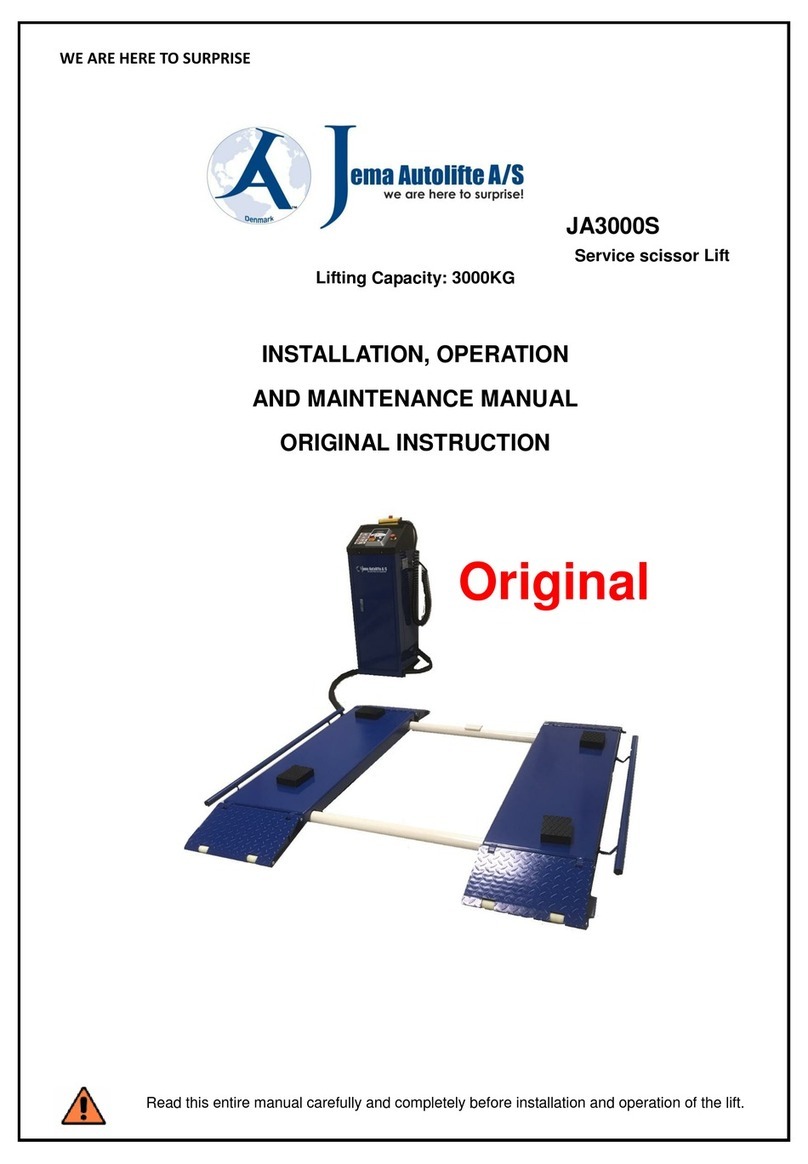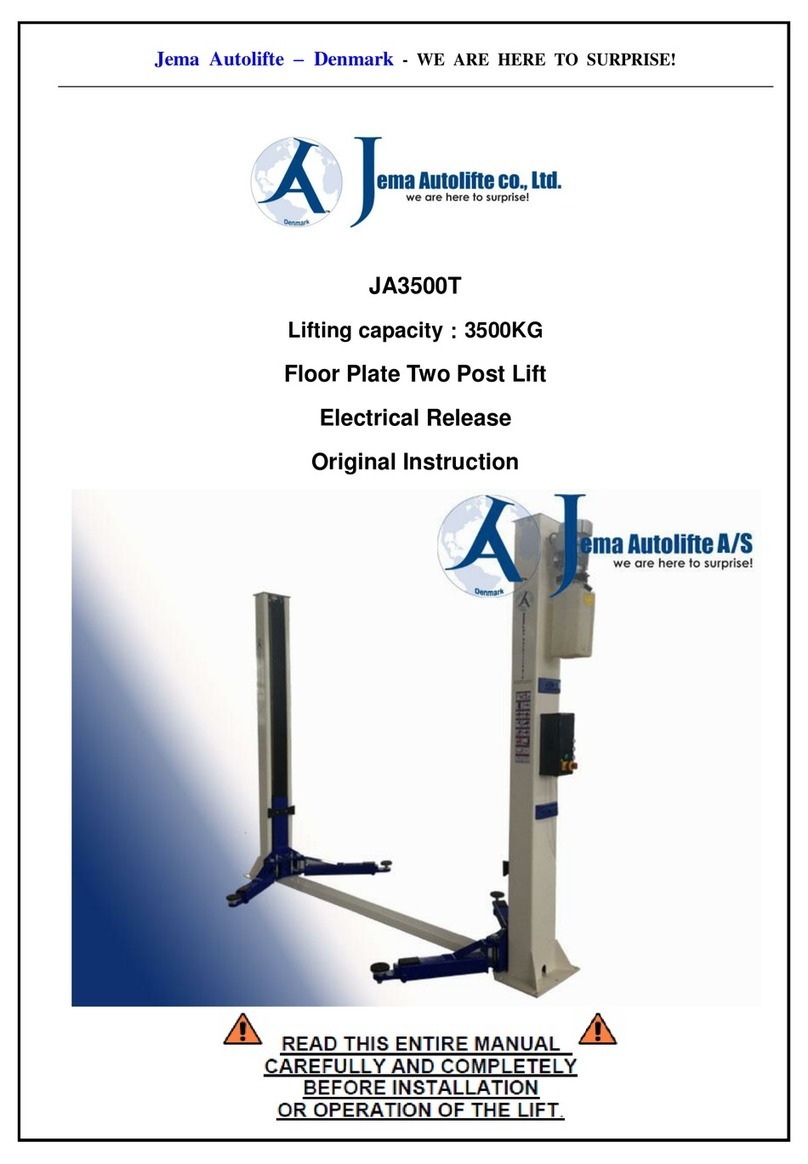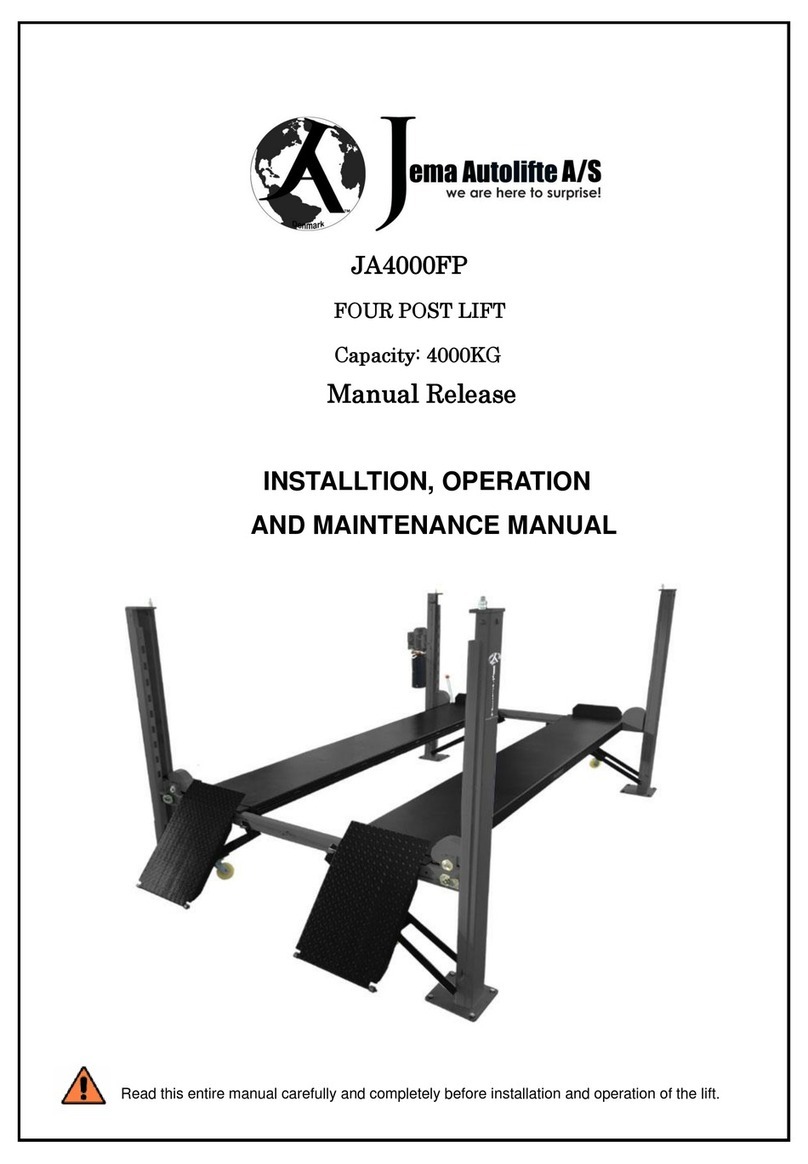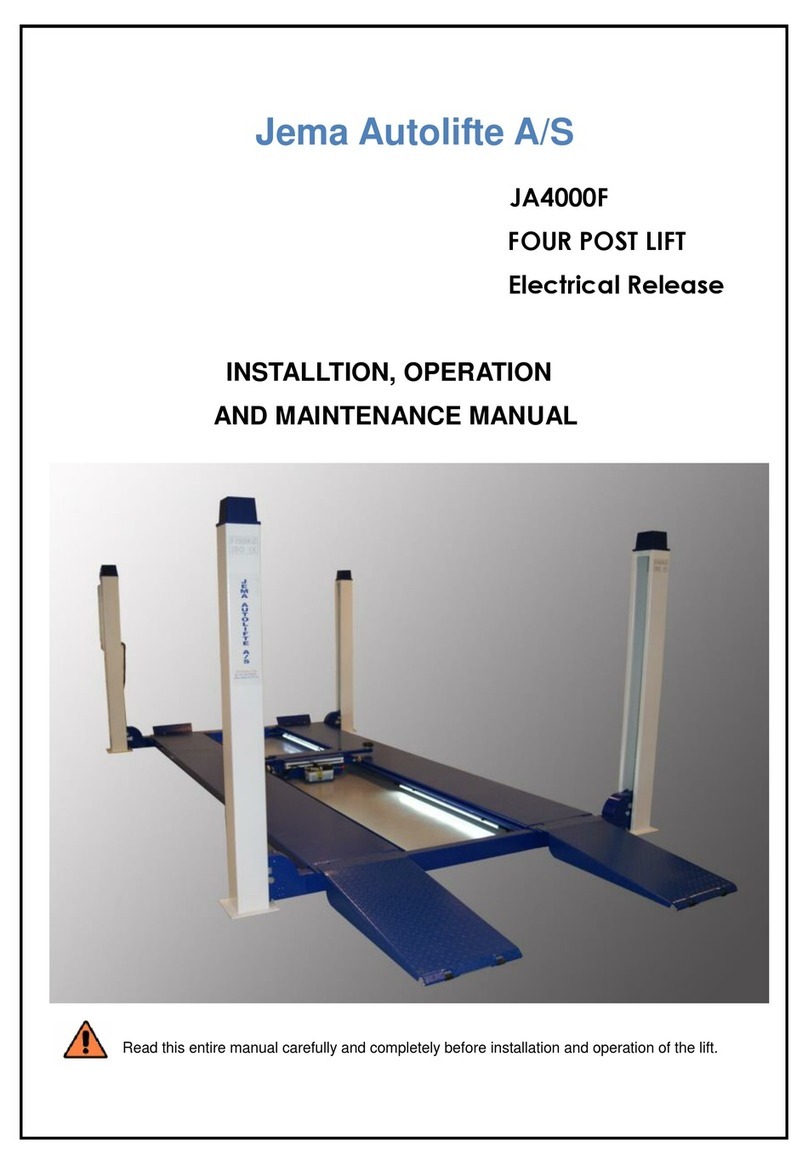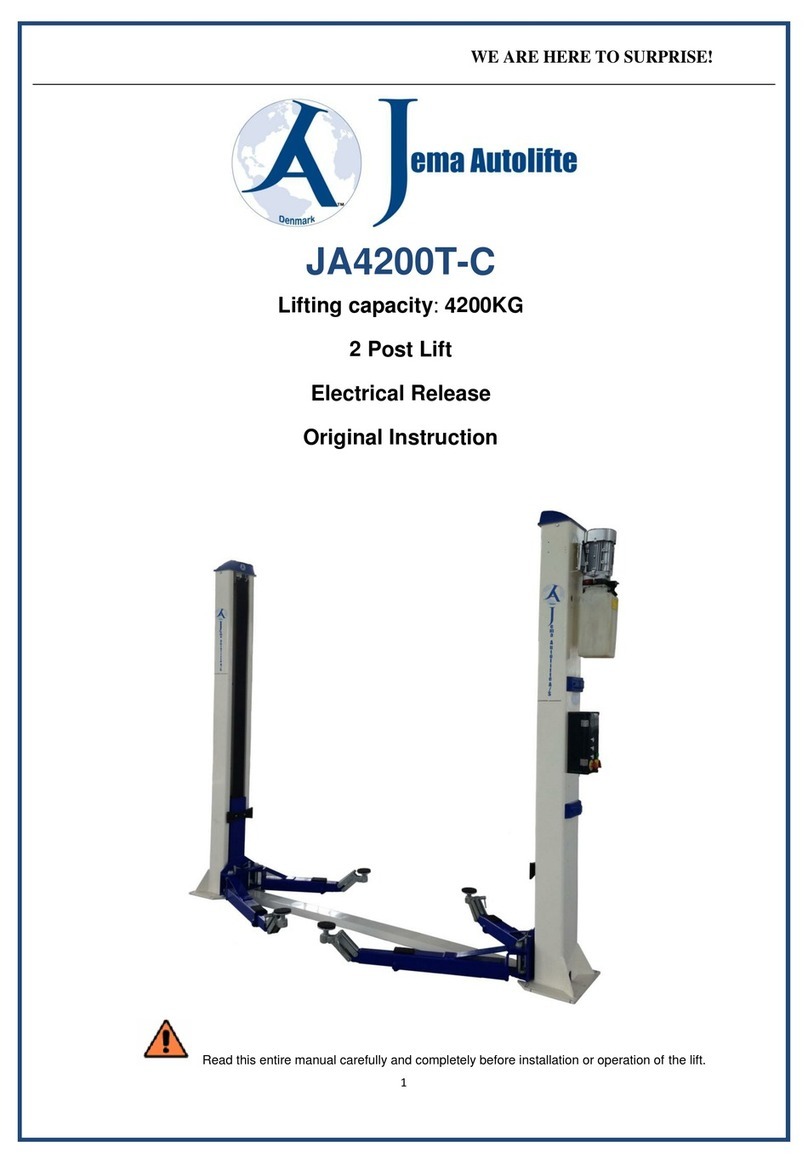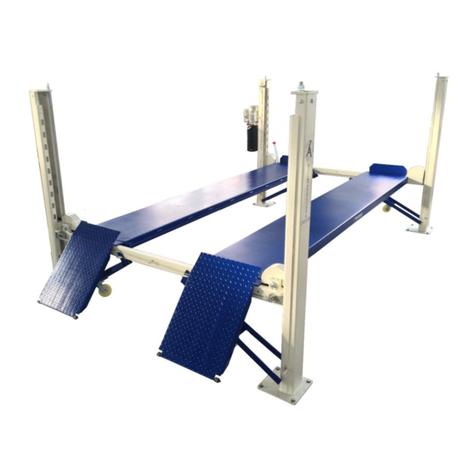1. IMPORTANT SAFETY INSTRUCTIONS
1.1 Important notices
Jema autolifte A/S will offer one-year's quality warranty for the whole machine,during which any quality problem will be properly
solved to the user's satisfaction. However, we will not take any responsibility for whatever bad consequence resulted from
improper installation and operation, overload running or unqualified ground condition.
Users must always bear in mind that this lift is specially designed for lifting cars or other vehicles, so never use it for any other
purposes. Otherwise, we, as well as our sales agency, will not bear any responsibility for accidents or damages of the lift.
Make sure to pay careful attention to the label of the lifting capacity attached on the lift and never try to lift cars with its weight
beyond.
Read this manual carefully before operating the machine to avoid economic loss or personnel casualty incurred by wrong
operation.
Without our professional advice, users are not permitted to make any modification to the control unit or whatever mechanical unit.
1.2 Qualified personnel
1.2.1 Only properly trained personnel can operate the lift.
1.2.2 Electrical connection must be done by a competent electrician.
1.2.3 People who are not concerned are not allowed in the lifting area.
1.3 Danger notices
1.3.1 Do not install the lift on any asphalt surface.
1.3.2 Read and understand all safety warnings before operating the lift.
1.3.3 Do not leave the controls while the lift is still in motion.
1.3.4 Keep hands and feet away from any moving parts. Keep feet clear of the lift when lowering.
1.3.5 Only properly trained personnel can operate the lift.
1.3.6 Do not wear unfit clothes such as large clothes with flounces, tires, etc, which could be caught by moving parts of the lift.
1.3.7 To prevent evitable incidents, surrounding areas of the lift must be tidy and with nothing unconcerned.
1.3.8 The lift is simply designed to raise the entire body of vehicles, with its maximum weight within the lifting capacity.
1.3.9 Always ensure the safety latches are engaged before any attempt to work near or under the vehicle. Never remove safety
related components from the lift. Do not use if safety related components are damaged or missing.
1.3.10 Do not rock the vehicle while on the lift or remove any heavy component from vehicle that may cause excessive weight
shift.
1.3.11 Check at any time the parts of the lift to ensure the agility of moving parts and the performance of synchronization. Ensure
regular maintenance and if anything, abnormal occurs, stop using the lift immediately and contact our dealers for help.
1.3.12 Lower the lift to its lowest position and do remember to cut off the power source when service finishes.
1.3.13 Do not modify any parts of the lift without manufacturer’s advice.
1.3.14 If the lift is going to be left unused for a long time, users are required to:
a. Disconnect the power source.
b. Empty the oil tank.
c. Lubricate the moving parts with hydraulic oil.
Attention: For environment protection, please dispose the disused oil in a proper way.
